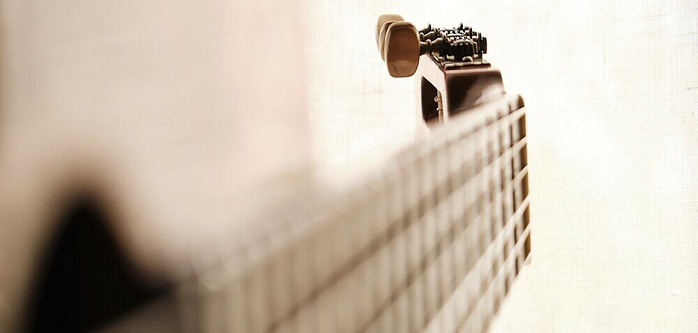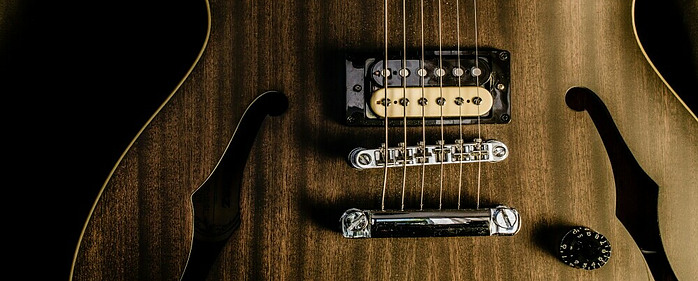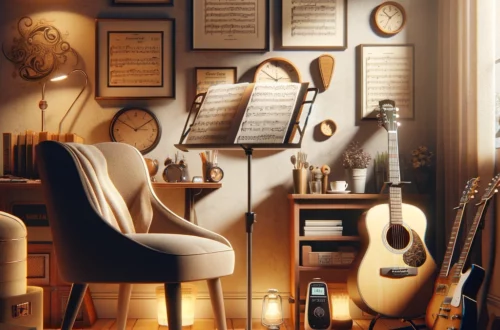
Common Mistakes Made By Beginner Acoustic Guitar Players
In this guide, I’ll share key insights to enhance your guitar journey by steering clear of common pitfalls. Drawing from my four-year learning experience, I offer practical advice for beginners. Whether you’re starting or navigating early stages, learn from real-life lessons to sidestep mistakes and enrich your guitar learning adventure.
I remember the day I picked up my first guitar, an entry-level acoustic that felt like a gateway to a world brimming with musical possibilities. I was eager, optimistic, and ready to start strumming away at songs that had been echoing in my head for weeks.
Fast forward four years, I look back at that version of myself with a smile, recognizing the naivety but also the sheer determination that got me through the early stages of learning to play the guitar.
I’m not a professional guitarist. I don’t play sold-out concerts or record albums, but I have something just as valuable to share: real, hands-on experience, with a clear understanding of the physical and mental challenges when it comes to learning the guitar.
Over these four years, I’ve encountered countless hurdles, and it’s precisely these encounters that I want to discuss with you. This guide is my way of laying out the common stumbling blocks you might face as a beginner guitarist, with the hope that you sidestep them and find joy in every chord you play.
Table of Contents
The Do’s & Don’ts When Choosing Your First Acoustic Guitar
Now, before we look into the specifics of practice, and all the nuances of playing, let’s start at the very beginning. Choosing your companion on this journey, your first acoustic guitar. It’s an important decision that can make or break your budding relationship with music.
So, in the following section, I’ll lay out just how crucial it is to select the right instrument. Here I will offer guidance to ensure you make a choice that supports your musical aspirations, not hinders them.
Don’t Buy a Guitar Because it Looks Good

Firstly, Consider this: Just because a guitar looks appealing doesn’t mean it’s the right fit for your hands, your style, or your learning curve. There are a few things I’d advise you to avoid.
It’s easy to be swayed by the recommendation of a seasoned guitar player, who may suggest a very specific model that works for them, but remember, what’s comfortable for one may not be for another.
Watch Out for Super Cheap Guitars.
Don’t overlook the importance of a well-constructed guitar. Quality matters even for beginners, as a poorly constructed guitar can lead to issues with tuning stability and sound projection, which can be frustrating and demotivating. Always test a few options within your budget and consult with trustworthy guitarists or shop staff who understand a learner’s needs.
How To Choose Your First Acoustic Guitar

Budget Considerations
While it’s important to prioritize quality, establishing a practical budget for your first guitar is key. There are excellent entry-level options that strike a balance between affordability and playability.
This may sound contradictory to the last section, but for those who may be on a really tight budget at the minute, then I’m going to tell the truth and let you know that my first guitar which I had for over 3 years only cost me £40 in the UK, so around 50 US Dollars, give or take from Amazon.
Surprisingly, This particular guitar has been brilliant. I have had no tuning issues and plays pretty well considering the price. I refused to buy an expensive guitar until I felt like I was at a decent enough level of playing ability, but that’s just me. Ideally, you would want to buy something a little better than my first guitar, but it is certainly worth a mention.
With that said, I got lucky with my first guitar purchase. So, please realise that the best way to purchase a guitar for you would be to Physically visit a guitar store and ask for advice from members of staff who work there. This is how I purchased my second guitar and it was made easy by having expert advice.
Emphasize Playability
Prioritize playability over aesthetics. A guitar that feels comfortable during play encourages consistent practice. Take into account factors like neck size, string action, and body size to ensure a smooth playing experience.
Choose the Right Body Type
Acoustic guitars come in various body shapes, each contributing to a unique tone. Experiment with different body types and sizes to find one that complements your playing style and physicality to produce the desired sound.
Explore Local Guitar Stores
Visiting a nearby guitar store and physically trying out instruments is invaluable. Pay close attention to how each guitar feels in your hands and responds to your playing. Seek advice from knowledgeable store staff without hesitation if you are unsure.
As you transition into regular practice sessions, you’ll appreciate having made an informed choice. A guitar that feels right in your hands and offers the tonal quality that pleases your ear will be an invaluable asset in your musical journey.
Mastering the Basics & Having a proper Practice Routine

Perfect the basics, Open chords
Mastering open chords is a journey of discovery and a foundational step toward becoming a proficient acoustic guitarist. With a patient and dedicated approach, you’ll find yourself strumming through your favorite tunes with clarity and confidence, unlocking the true potential of your acoustic guitar.
An error I made in the beginning was tackling complexities beyond my current skill level. The optimal approach is focusing on mastering the basics—open chords, fundamental progressions, or songs exclusively using open chords. Hone these foundational skills extensively before progressing to more advanced challenges.
Simple Open Guitar Chords For Every Beginner
Having a Proper Routine to Follow
At first, I never had a scheduled routine to follow. I would just learn random aspects of playing the guitar without any real guidance. I believe this is the NUMBER 1 reason why people quit over time. This has been my biggest battle to date on my own journey, so this is why I wrote an article on how to plan a routine that fits around your schedule.
Daily Guitar Practice Made Easy: Practical Tips For Beginners
Once you’ve established good habits in this area, delving into the language of music — the chords, scales, and melodies — becomes far more intuitive. And that’s exactly where we’re headed next. Without a solid grasp of basic music theory, even the best posture won’t prevent discordance on your musical journey.
Underestimating the Value of Basic Music Theory

As you take a look into music theory, you’ll find your ability to pick up new songs accelerates. Patterns will emerge, and what once seemed like random arrangements of notes will start to make sense. This progression in understanding is the same as a lightbulb moment that ignites a more profound appreciation and inclusivity in guitar playing.
The Mistake
Music theory was an aspect I underestimated for quite some time. While I won’t claim that music theory is my primary focus in learning the guitar, incorporating it into my routine became an essential element.
I urge you not to skip over this fundamental aspect. Start simple. You don’t need to become a scholar overnight but familiarize yourself with keys and how chords are constructed. This knowledge will empower you to not just mimic others, but also to create and communicate your own musical ideas.
The Tip
Typically, I would set aside time on weekends to look into theory, either through YouTube videos or, for a more structured approach, I enrolled in Justin Guitar’s Practical Music Theory Course, complemented by Marty Guitar’s Beginner Barre Chord lessons.
I opted for these courses because I’m a hands-on learner, and integrating theory while playing is crucial for my understanding. The noteworthy aspect here is that both recommendations are FREE to enrol in, making it a cost-free entry into the realm of music theory.
For those at the initial stages of their guitar journey, I highly recommend Marty Guitar’s Barre Chords course. This specific course provided me with a deeper understanding of how the guitar neck functions.
Talking about lightbulb moments, this was one for sure. Proving to be a pivotal resource for understanding more about how the guitar works and the theory behind it. It’s brilliant to dip your feet into the world of guitar theory as a beginner.
The Value of Warm-Up Exercises

Getting in The Zone
I can’t emphasize enough the impact warm-up exercises have had on my guitar playing. Regularly integrating them into my practice routine has not only fine-tuned my dexterity but also shielded me from unnecessary strain. Here’s why you too should not bypass this step.
Think of warm-up exercises as your musical oatmeal – it might seem mundane, but it sets you up for success throughout the day. These exercises prime your fingers for intricate work, and the benefits are there for sure. They increase blood flow, thereby enhancing your finger flexibility and responsiveness.
Don’t forget, warm-ups don’t have to be tedious. You can make them as enjoyable as any other part of your practice. Play around with different patterns, and try timing yourself to make a game out of it. The aim is to enjoy warming up as much as you do playing your favourite tunes.
10 minutes: Warm-Up
Dive into the A minor Pentatonic scale with a backing track. Not only does this serve as a warm-up, enhancing finger dexterity and coordination, but it also lays the groundwork for improvisation skills down the line. It’s like hitting two birds with one stone by incorporating scales into the warm-up routine.
Not Using a Metronome

One prevalent misstep in the journey of a budding guitarist is sidestepping the invaluable companion – the metronome. Timing and rhythm are the unsung heroes of any great musical performance, and neglecting them can lead to a cascade of musical missteps.
This is not something you have to go out and buy either. These can be found on free apps such as Metronome Beats that I use.

The Mistake
I never used to play using a metronome, fortunately, according to my guitar tutor, my musical timing is pretty good, so, again I got lucky, but since I started with a personal tutor I have since used a metronome when playing.
The repercussions are subtle yet impactful. Without this rhythmic guide, your playing is at risk of falling into a disjointed cadence, hindering the development of your timing and rhythm skills.
The Tip
Here’s the rhythmic remedy – incorporate the metronome into your practice routine. Treat it as your musical heartbeat, setting the pace for each note and chord. Start slow, maybe 50- 60 bpm, gradually increasing the tempo as you master each section. This not only polishes your precision but also ingrains a solid sense of timing that carries over to individual practice sessions.
Daily Guitar Practice Made Easy, Practical Tips For Beginners
Setting Realistic

The Mistake
Starting the guitar journey without a compass of realistic goals was such a downfall for me. Four years into this musical expedition, the summit of expertise still looms distant. Has the journey been enriching? Undoubtedly. Yet, it took time to grasp the essence—the symphony of learning the guitar unfolds not as an overnight sensation but as a gradual masterpiece.
Why It Matters
The reason I bring this up as a mistake is because along with not having some sort of routine to follow, not being as good as you expected in a predetermined amount of time is another killer of motivation when learning the guitar.
The notion of not reaching an anticipated skill level within a predetermined timeframe can be a potent demotivator, prompting many to abandon the journey early.
The Tip
Start by establishing short-term goals that are not just achievable but also align with your current skill level. These milestones act as stepping stones, guiding you through incremental progress. As you conquer each goal, the confidence gained propels you toward more challenging aspects.
Online Guitar Learning

The Mistake
When I started my guitar journey, I relied heavily on YouTube tutorials only. Primarily focused on specific songs I wanted to learn.
While YouTube is a valuable resource, it lacks the structured approach essential for comprehensive learning. Many beginners face the challenge of insufficient guidance, and I was no exception.
Now, I’m not saying that utilising YouTube is not a great way to go about learning the guitar but what I will say is, that nothing beats a more structured approach to learning.
If you resonate with the need for a step-by-step approach, joining an online course could be your key to structured learning without breaking the bank.
The Benefits of a More Structured Approach
Online courses offer a curated curriculum, providing systematic lessons and addressing fundamental concepts. This structured approach enhances your understanding and progression. While exploring random aspects of playing can be enjoyable, it should be intergrated with well-organized learning ensuring you cover all essential elements systematically.
Consider it as a roadmap guiding you through each milestone of your musical journey. Joining an online course can be a transformative step toward becoming a more proficient and well-rounded guitarist.
Being Patient
One thing I’ve learned is that the journey of learning guitar is heavily loaded with lessons—not just about music, but about patience, dedication, and the humility to accept and grow from mistakes.
I’ve distilled my experiences into practical advice, focusing on those early days when every small victory feels like a giant leap. So, whether you’re cradling your guitar for the first time or you’ve been plucking away for a few months or more, I really hope that you have found something here that resonates. Thank you for reading.
martin@chordexplorer.com





